Marinated in sweetened vinegar, Pickled Lotus Root or Su Renkon is tender yet crunchy. With a piquant flavor, it‘s a great palette cleanser between seasoned dishes. Enjoyed year-round, it‘s also popular for Osechi Ryori or traditional Japanese New Year foods.
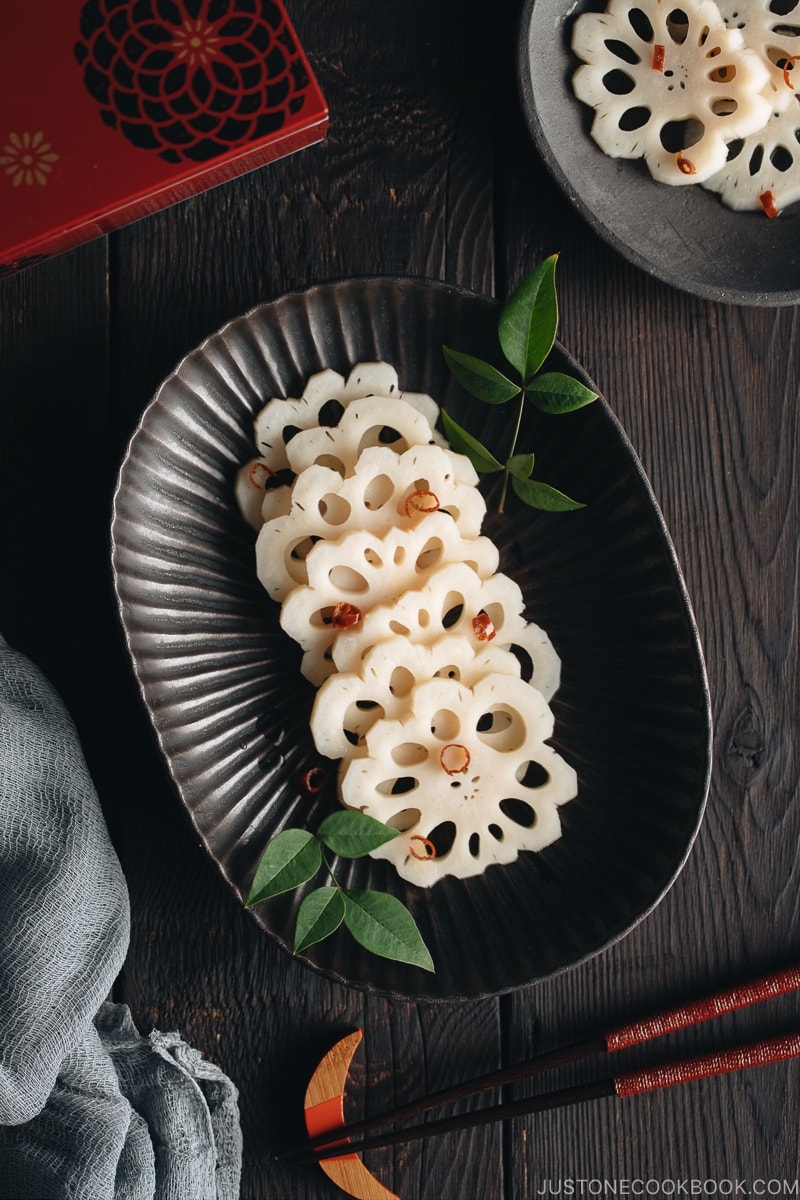
I always love lotus root for its beautiful natural design. The pale brown stem may look just like any other plant roots and characterless from the outside, but when you slice it open, the root reveals uneven tiny holes that are ready to surprise and delight. When sliced thinly, they even resemble delicate flowers.
Lotus root also has an incredibly unique texture because even after cooking, it retains its crunchiness while staying tender. Today I’m going to share Pickled Lotus Root recipe, or we call Su Renkon (酢れんこん) in Japanese.
What is Pickled Lotus Root (Su Renkon)?
Su Renkon (酢れんこん) is a pickled dish where sliced lotus roots are marinated in rice vinegar, sugar, salt, mirin, and red chili pepper. With a refreshing and piquant taste, this vinegared dish is great as a palette cleanser between heavily seasoned foods.
Because lotus root can oxidize after it is exposed to the air, we typically submerge it in the water with a little bit of vinegar or pickled in a vinegared sauce. This helps to remove any astringent taste and prevent the root from turning brown.
This dish is eaten all year round, but it is specially served as one of the Osechi Ryori, a Japanese New Year Food.
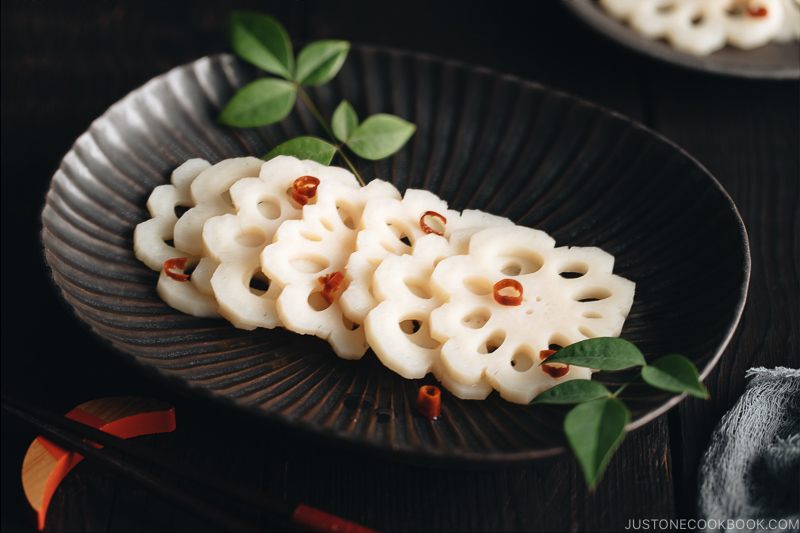
Pickled Lotus Root (Su Renkon) as Auspicious Food
Lotus root has been considered an auspicious food for the Japanese New Year because lotus root with its many holes is a symbol of an unobstructed view of the future. It also has many seeds, hence it’s been eaten to pray for the prosperity of descendants.
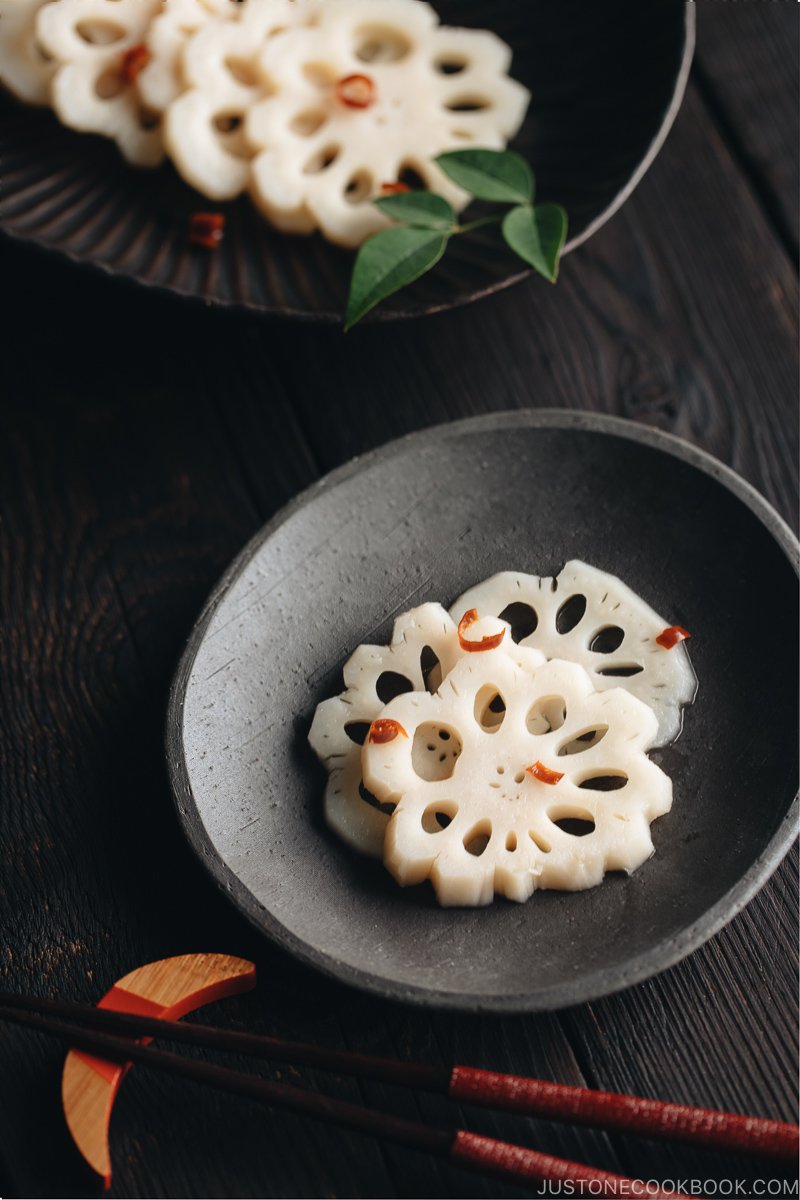
Optional – How to Make Flower Lotus Root (Hana Renkon)
You might be curious how we make this pretty flower pattern out of lotus root. It’s actually not so difficult, but you will need:
- Patience
- A very sharp paring knife
- Lotus root with even size holes
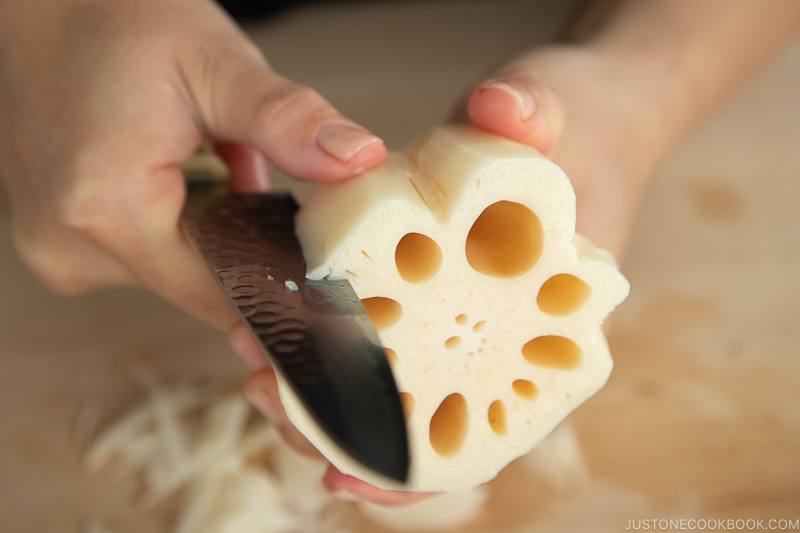
1. Cut lotus root into a 2-inch length so it’s easy to work with. Cut out the “V” shape between two holes.
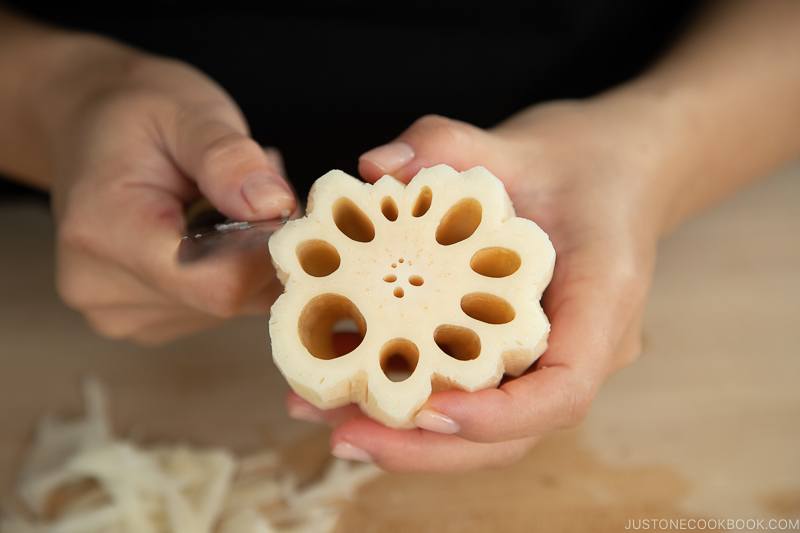
2. Remove the v-shape part and continue to next area between the holes.
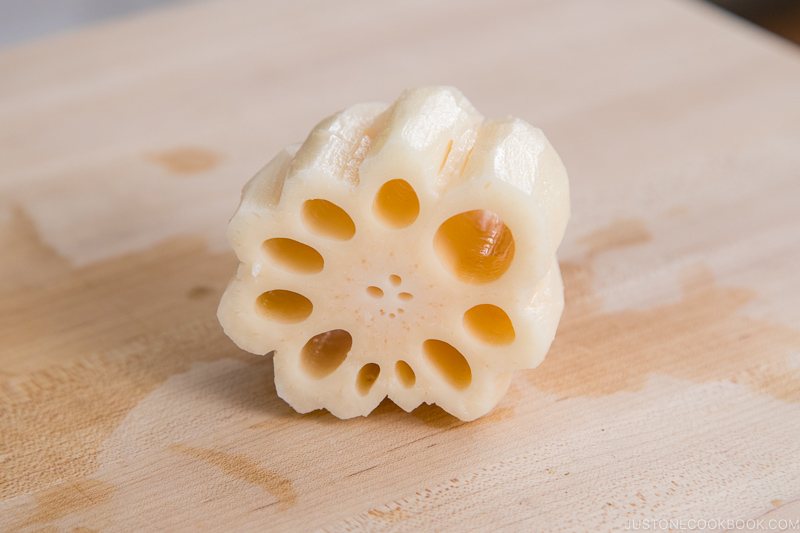
3. Now ready to cut into slices.
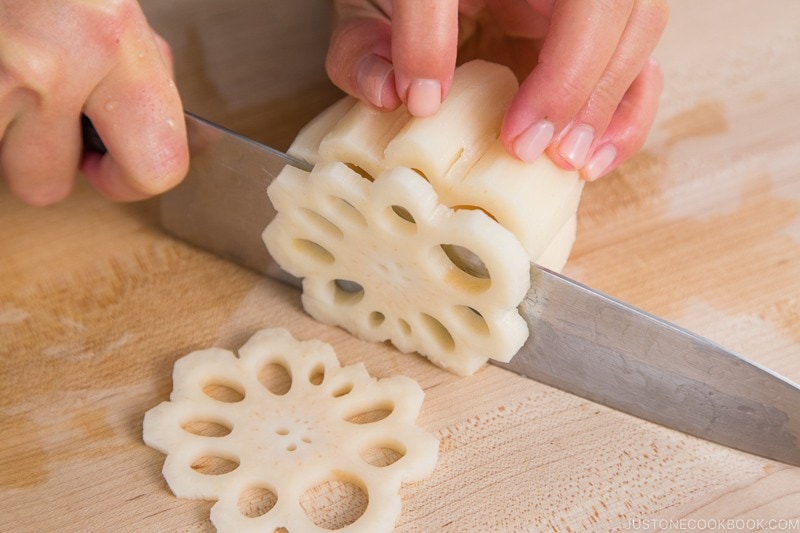
4. Slice into roughly 1/8 to 1/4 inch thick pieces.
Having a sharp knife helps you score the “V” shape and remove the excess part nicely. If you make a mistake, it’s okay. Move on to the next. Practice makes perfect.
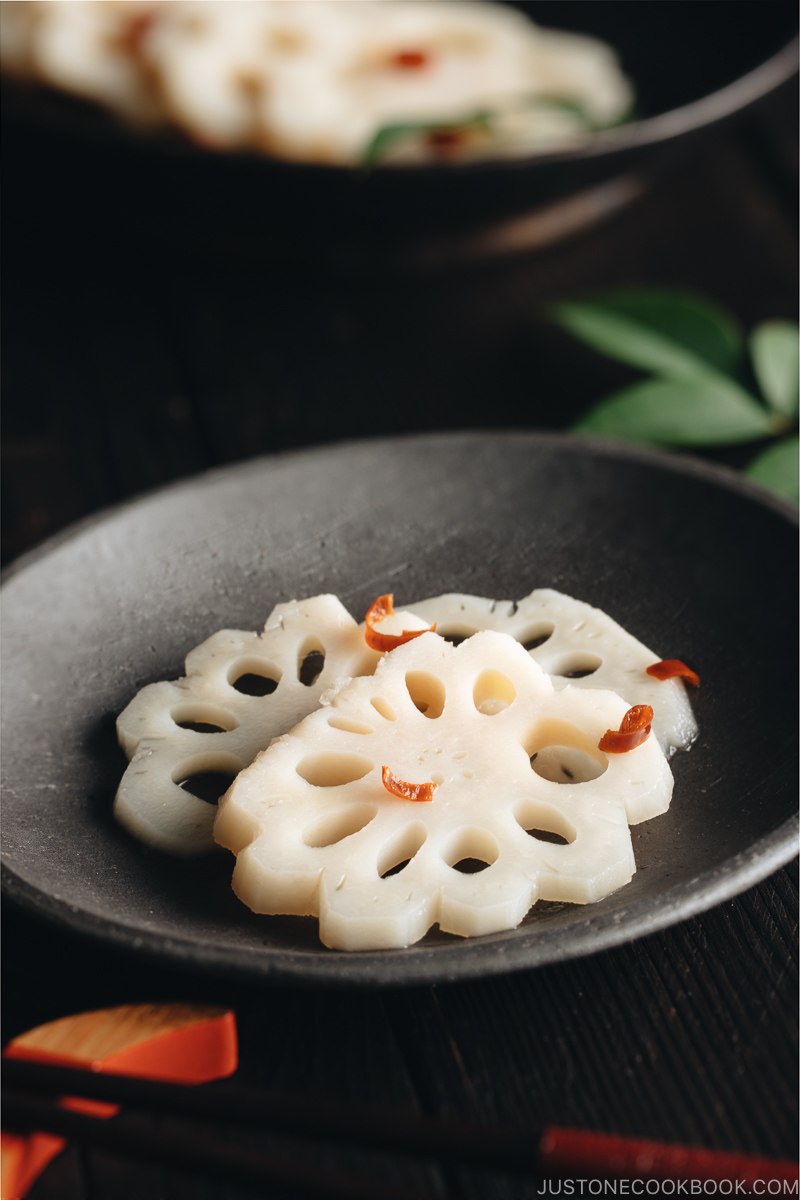
Other Lotus Root (Renkon) Dishes for the New Year’s Food
- Chikuzenni (Nishime) – root vegetables including lotus root are simmered along with the chicken.
- Kinpira Renkon – thinly sliced lotus root stir-fried and seasoned with sauce.
- Karashi Renkon – a mixture of miso and Japanese karashi hot mustard stuffed in lotus root, coated in a turmeric flour batter, and deep-fried.
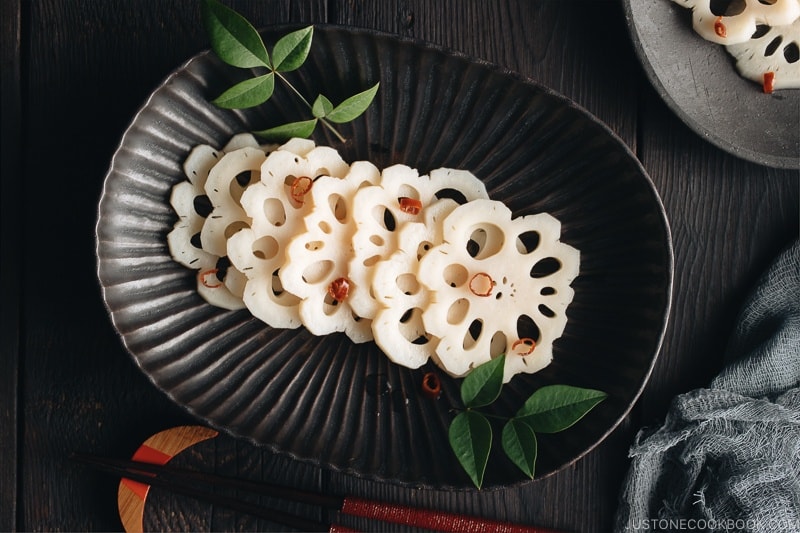
Wish to learn more about Japanese cooking? Sign up for our free newsletter to receive cooking tips & recipe updates! And stay in touch with me on Facebook, Pinterest, YouTube, and Instagram.

Pickled Lotus Root (Su Renkon)
Ingredients
- 1 lotus root (renkon) (7 oz, 200 g)
- 1 tsp rice vinegar (unseasoned) (for soaking the lotus root)
- 4 cups water (for soaking the lotus root)
For the Seasonings
- ¾ cup water (for soaking the kombu to make Kombu Dashi)
- 1 piece kombu (dried kelp) (5 g; 2 x 2 inches, 5 x 5 cm per piece)
- ½ cup rice vinegar (unseasoned)
- 3 Tbsp sugar (add more if the solution is too tangy)
- ¾ tsp Diamond Crystal kosher salt
- 1 dried red chili pepper
Instructions
Before You Start…
- Please note that this recipe requires a soaking time of at least 6 hours. If you will include this dish in your Osechi meal, I recommend preparing it up to 3 days before you plan to serve. For more helpful tips on planning your Japanese New Year feast, please read my A 5-Day Osechi Cooking Timeline blog post.
- Gather all the ingredients.
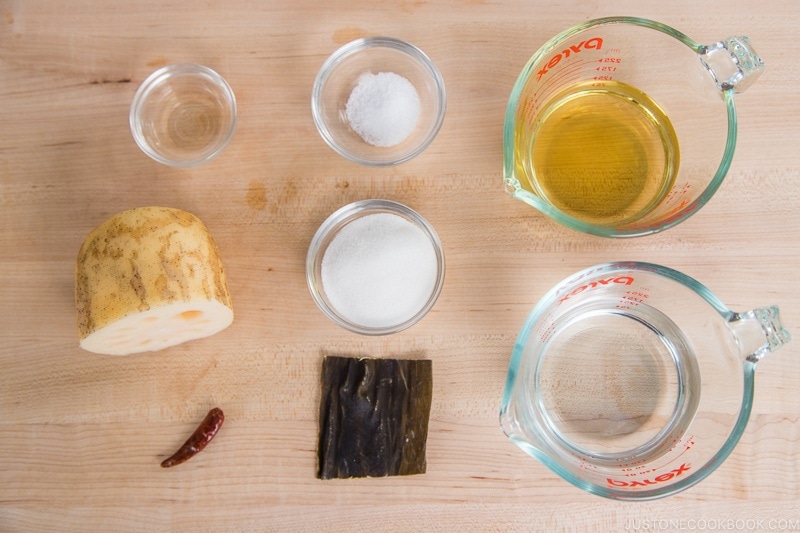
To Prepare the Ingredients
- Soak 1 piece kombu (dried kelp) in ¾ cup water. After 30 minutes, you now have cold brew Kombu Dashi.
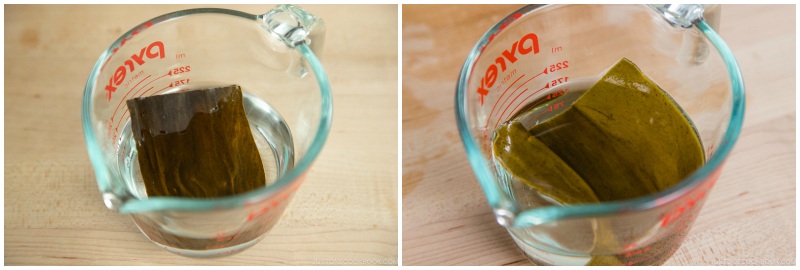
- Meanwhile, peel 1 lotus root (renkon). If you want to make the lotus root into a flower shape, see Optional Steps 1 and 2 below. Otherwise, slice the lotus root into ¼-inch (6-mm) rounds.
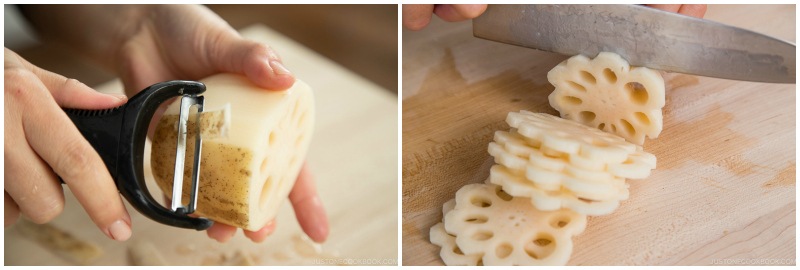
- Optional Step 1: To make flower-shaped lotus root (Hana Renkon), cut the lotus root into a 2-inch length so it’s easy to work with. Next, cut out a V-shaped notch between two holes and along the length of the root.

- Optional Step 2: Continue cutting between the holes until you‘ve cut around the entire outside of the root. The cross section of your lotus root should now resemble a flower. Then, cut the root into ¼-inch slices (0.6 mm).

- Add the lotus root slices to a bowl with vinegared water made from 1 tsp rice vinegar (unseasoned) and 4 cups water. Soak the lotus root slices for 5 minutes to prevent them from changing color and to remove the astringent taste.
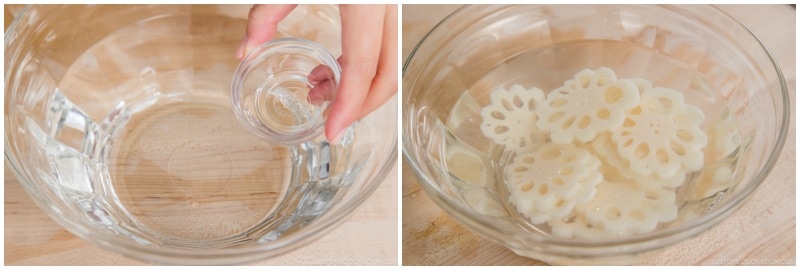
To Cook
- In a medium saucepan, combine the kombu dashi (with the kombu), ½ cup rice vinegar (unseasoned), 3 Tbsp sugar, and ¾ tsp Diamond Crystal kosher salt. Turn on the heat to medium heat and mix well.

- Add the lotus root slices and spread them out evenly in the liquid.
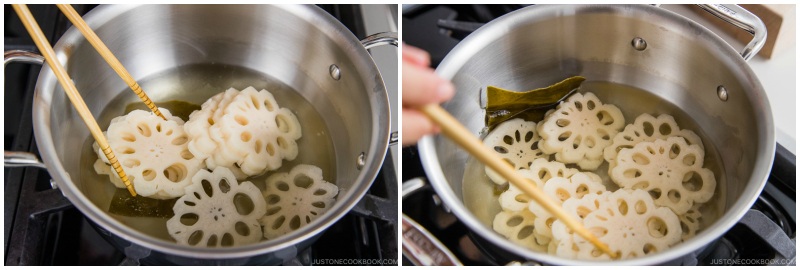
- Right before the sauce comes to a full boil, remove the kombu; you can reserve it to make Simmered Kombu (Kombu Tsukudani) or Homemade Furikake (Rice Seasoning). Next, put an otoshibuta (drop lid) on the lotus root. If you don‘t have one, you can make an otoshibuta with aluminum foil.
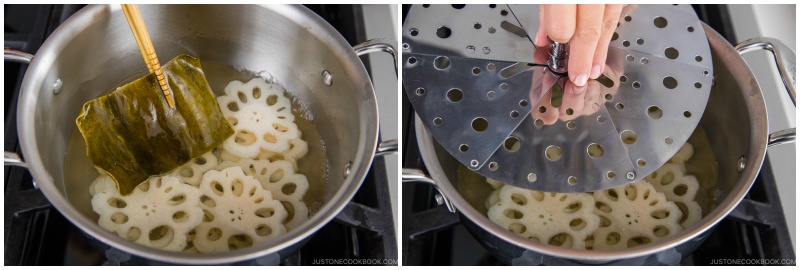
- Cook with the otoshibuta on for 5-8 minutes, or until an inserted skewer pierces the root easily.
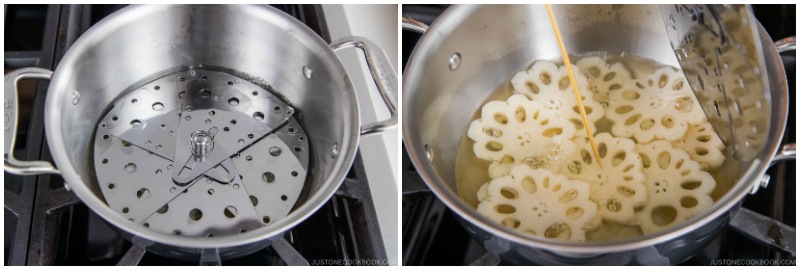
- Transfer the lotus root and sauce to an airtight container with a lid.
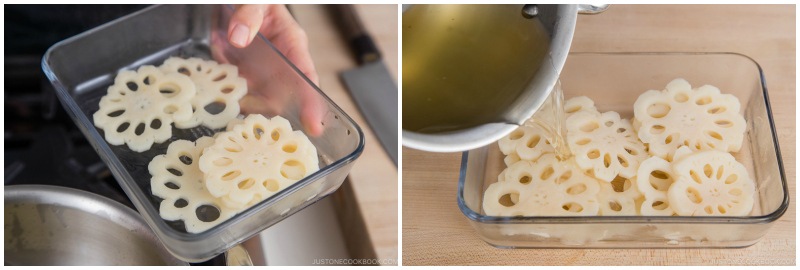
- Remove the seeds from 1 dried red chili pepper (or keep some if you like it spicy), and slice the chili pepper into thin rounds.
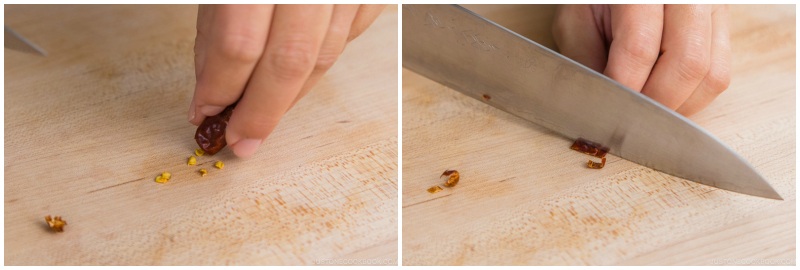
- Place the red chili pepper rounds in the sauce. Let the lotus root cool completely. Then, store it in the refrigerator to soak for at least 6 hours so the flavors absorb completely.
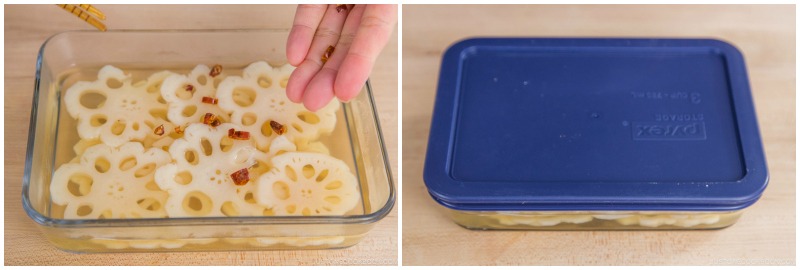
To Serve and Store
- Enjoy the Pickled Lotus Root either chilled or at room temperature. You can keep it in the refrigerator for up to 5–7 days and in the freezer for up to a month. Make sure the lotus root slices are covered in the sauce during storage.
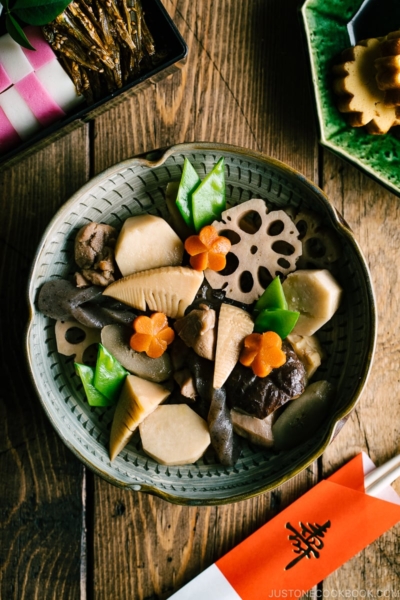


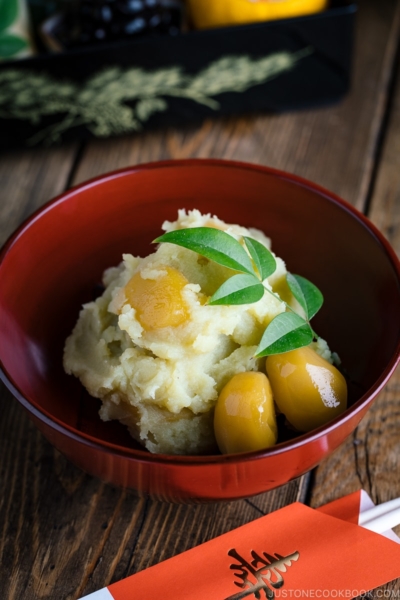




Hello,
Thank you so much for all your work, Just One Cookbook has become my kitchen bible in the last year, and my alimentation style has greatly improved since!
I am planning on making a batch of these and freezing them afterwards. However I am a bit worried that the sauce would freeze too, would you suggest letting the pickles in the fridge for the soaking time before getting rid of the liquid and freezing them?
Hi, Caecilia! Aww.Thank you so much for your support and kind words. It meant a lot to us.💞
Please freeze these pickles with the sauce after pickling. If you’re making many of them, we recommend storing them in small batches for easier access later.
We hope this helped!
How long do these keep for? I was thinking of making a large batch.
Hi Annika4, Thank you for trying Nami’s recipe!
How to store and save information are at the end of the recipe card. You can keep it in the refrigerator for up to 5-7 days and in the freezer for up to a month. 🤗
We hope this helps!
Hello Nami-san,
Thank you for all your recipes and tips on Japanese cooking and food, I absolutely adore your website ! 🙂
Here is my question regarding this recipe : I live in a rather remote part of my country (not so remote that we don’t have the internet but still) and the only lotus roots I could find are frozen ones. I am guessing they are blanched but I am not entirely sure as there is no indication on the package. Is it okay to use those for this recipe ?
Many thanks in advance for your answer !
Lena
Hi Lena! Thank you very much for reading Nami’s post and trying her recipe!
Without looking at the frozen Lotus roots, It’s hard to tell. But it is usually pre-poached Lotus Root and ready to use.
The texture would be softer than a fresh one. But if it is okay with you, you can use it for this recipe.
We recommend cooking the seasonings without the Lotus root for about 3 minutes. Then add the frozen lotus root and cook it for another 3 minutes until the inserted skewer goes through smoothly. (Step 4)
We hope this helps!😀
Is there a way I can make this with pre-peeled-and-poached Lotus Root? The vinegar is added during the cooking here which I’m guessing is already done with the pre-cooked stuffed. Thanks and LOVE your blog…
Hi Giuseppe, Thank you very much for reading Nami’s post and for your kind feedback!
If you are using pre-peeled and poached Lotus Root, we recommend rinsing the Lotus root with water after you take it out from the package.
Then cook the seasonings without the Lotus root for about 6 minutes, and add the lotus root at the last 2 minutes of cooking and cook until the inserted skewer goes through smoothly. (Step 4)
We hope this helps!😀
Thank you! I’ve give that a try! Joe
My pleasure! We hope you enjoy this dish!
👍
Hi Rose! Yay! We are glad to hear you enjoyed it!😃
Hi Kathy!
We are so glad to hear you enjoyed it!
Thank you for trying many of Nami’s recipes and for your kind feedback.
Hi Nami,
I love your recipe! May I know can the seasonings reuse?
Hi Li! Thank you so much! No, unfortunately, seasonings should not be re-used because the moisture from the vegetable will dilute the seasonings. 🙂
I don’t have kombu. Can I just use “regular” dashi?
Hi Chika! Sure, you can replace the water + kombu with the dashi you have. 🙂
For a lazy cook like me, would it be possible to do this in Instant Pot using 0 min low pressure? Probably remove the kombu prior the water boiling.
Hi Jos! Sure, but pressurizing takes 10 minutes and then natural release (or quick release)… time-wise, probably about the same amount. 🙂
Haha, but at least with pressure cooker, it’s more hands off so I don’t have to baby sit them 😉
Haha yeah, that’s true. 😀
I am new here.
I just got started making Tsukemono for myself and I expected Tsukemono to have an entire category of it’s own.
Is pickling something you leave to other information providers?
Hi David! I have Asazuke (quick pickling) recipes on my site, which is the most commonly made tsukemono in a typical Japanese household. However, starting this year I’m going to share more Tsukemono recipes (and we just filmed a recipe yesterday). 🙂